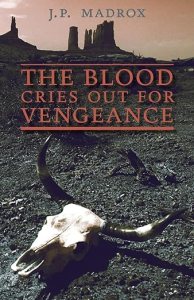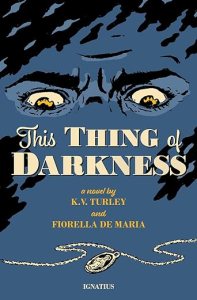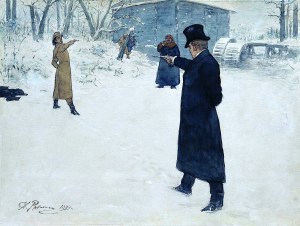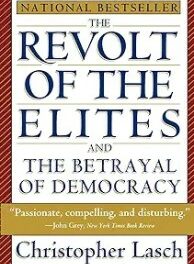We support our Publishers and Content Creators. You can view this story on their website by CLICKING HERE.
Incarnating the truth in art is the supreme test for a writer with convictions, and this problem is the real heart of the tension between entertainment and literature.
I had a friend in England I’ll call Rosemary. She had always wanted to be a writer, so she honed her craft and eventually got a contract to write women’s romance novels. Rosemary would churn out three or four of the supermarket paperbacks each year. When we would visit, my wife would alway receive a copy of the latest torrid tale. Since Rosemary was writing in the sub-genre of “medical romance” her stories always featured a female nurse or technician in love with a dashing doctor.
Rosemary knew what she was doing, and as a Catholic, she not only ensured that her Cinderellas were chaste, but that the heroine always struggled with a genuine moral dilemma. Should she commit adultery or not? Should she have an abortion or keep the baby? Should she marry for love or money?
When I asked about her literary ambitions, Rosemary chuckled and said she was happy to write for ordinary women and pointed out that her lightweight novels sold five times as many copies as the latest heavyweight literary prizewinning tomes. “Then” she added, “I started receiving my foreign royalties.” It turned out that most of Rosemary’s novels had new covers slapped on them and were then churned out in a range of languages to fill the shelves of European supermarkets. The appetite for such tales in the then-emerging Eastern European countries was enormous.
Rosemary once attended a writer’s conference in London and reported back that during one of the social events, a very well known literary author found out what sort of fiction Rosemary wrote and leaned over and said, “Could you show me how to do that? My books don’t really sell, and I need to pay the bills.”
Graham Greene classified some of his novels as “entertainments,” meaning that they were deliberately written to be more commercially attractive. His “novels” on the other hand, were intended as more serious literature. The same tension is present in Evelyn Waugh’s early satirical fiction versus Brideshead Re-Visited—which he referred to as his GEM: Great English Masterpiece.
In one of her letters, Flannery O’Connor (assuming her native patois) referred to the academics who were dissecting her work as “all them innerleckshuls”. I’ll bet she would also refer to “serious” fiction as “licherchur”.
Miss O’Connor took her art seriously, but thank God she did not take herself seriously. She had a proper suspicion of “all them innerleckshuls” and had little time for “licherchur”. O’Connor is a mistress of modern fiction because she had the humor and humility to crack this particular problem. Her fiction qualifies as both entertainment and fine literature.
This tension between “entertainments” and “licherchur” is exacerbated by two prevailing pressures. On the one hand, it is necessary to keep in mind one’s audience and, if one wishes to be published in the conventional way (as opposed to self publishing or e-publishing), the writer must understand not only his audience, but also the wider market for fiction. This pressures will move him toward “entertainment”.
If he is a serious writer and lover of great fiction, however, he will also aspire to something greater than mere pulp fiction. This tension between entertainment and “licherchur” is further heightened by the marketeers of popular fiction on the one hand and the academic critics and elite establishment, who set the bar with their literary prizes and gushing (or not) reviews. Does one aim for commercial success or the acclaim of the academy?
Put simply, what is the aspiring storyteller to do? Write lofty literature that doesn’t sell or ripping yarns that please the crowds? For whom shall we write? The hoity toity or the hoi polloi?
This tension seems present in two recent novels I have been asked to review: The Blood Cries Out For Vengeance by J.P. Madrox and This Thing of Darkness by K.V. Turley and Fiorella de Maria.
 In The Blood Cries Out For Vengeance, Ignacio de la Cruz is a parish priest in a small town in the Arizona territory that is filled with the characters you would find in a crusty Clint Eastwood movie, plus an insane psychopath, a motherly whore, and a mystical hermit.
In The Blood Cries Out For Vengeance, Ignacio de la Cruz is a parish priest in a small town in the Arizona territory that is filled with the characters you would find in a crusty Clint Eastwood movie, plus an insane psychopath, a motherly whore, and a mystical hermit.
Father Ignacio is also an ex bounty hunter who made his living exploiting the crimes of others while committing harsh brutalities himself. The story unfolds as he seeks redemption while also facing the challenge of defending his people and avenging the crimes of the marauding murderous Apaches.
Madrox’s book is described as “a philosophical thriller reminiscent of Umberto Eco’s Name of the Rose but set near the time and place of Cormac McCarthy’s Blood Meridian.” I had just read McCarthy’s poetically visceral novel, so, being a priest of a monastic bent, I ventured into Madrox’s story.
Madrox is certainly influenced by McCarthy. The explicit violence, the harsh social setting, and the vast austerity of the Western wilderness are all portrayed with the blend of brutality and beauty so common in gritty Westerns. As Father Ignacio pursues his mission of vengeful justice, he lives through the terror and torture of Holy Week and faces the depths of his own faith, doubt, and despair.
 The protagonist in This Thing of Darkness also confronts the face of evil —this time in the person of the aging film star Bela Lugosi. Set in Hollywood in the mid 1950s, English journalist and war widow Evangeline Kilhooley is assigned to write a series of articles on the now-fading star made famous by his role as Count Dracula. During a series of interviews, Lugosi draws Evangeline into the web of his dubious past life.
The protagonist in This Thing of Darkness also confronts the face of evil —this time in the person of the aging film star Bela Lugosi. Set in Hollywood in the mid 1950s, English journalist and war widow Evangeline Kilhooley is assigned to write a series of articles on the now-fading star made famous by his role as Count Dracula. During a series of interviews, Lugosi draws Evangeline into the web of his dubious past life.
As she gets to know Lugosi, Evangeline meets another English expatriate, Hugo Radelle, a movie buff who offers to help with her research. As their relationship deepens, Evangeline begins to suspect that Hugo knows more about her and her soldier-husband than he is letting on. Meanwhile, as her interviews with Lugosi continue, the darkness of his personality and past seem to clutch at her—threatening her hold on on sanity and reality.
I enjoyed both books and recommend them, but the question in my mind is, “Do the authors of This Thing of Darkness and The Blood Cries Out For Vengeance successfully navigate the minefield between entertainment and literature?” I’m not so sure. My own experience is that both novels were not entertaining enough to warrant the “real page-turner” verdict. In both cases I had to persevere to the end. Did they succeed as timeless literature? Again, I am not sure. Both novels deal successfully with powerful themes of darkness and light, brutality and beauty, faith and doubt, trust and betrayal.
However, like most novels by committed Catholics, these themes are perhaps too intrusive. At times both Madrox and Turley/deMaria lapse into introspection and theological reflection, which intrudes on the story and characters, and that is why I grew weary of the tale. Unless I am truly gripped by the character’s dilemma and see that the theological problems are integral to the plot and characters, I am not interested enough. Perhaps I am too shallow a person, or simply that I like my theology neat.
Incarnating the truth in art is the supreme test for a writer with convictions, and this problem is the real heart of the tension between entertainment and literature.
And yet, it is this accomplishment that provides both the best entertainment and the highest literature. How to pull it off? I don’t have a magic answer, but I suspect my friend Rosemary was closer to having the knack than writers who are more consciously driven by themes and more intent on writing licherchur.
This Thing of Darkness is published by Ignatius Press and The Blood Cries Out For Vengeance is published by Angelico.
The Imaginative Conservative applies the principle of appreciation to the discussion of culture and politics—we approach dialogue with magnanimity rather than with mere civility. Will you help us remain a refreshing oasis in the increasingly contentious arena of modern discourse? Please consider donating now.
The featured image is a cropped and edited lobby card for The Corpse Vanishes, featuring Bela Lugosi, and is in the public domain, courtesy of Wikimedia Commons.

 Conservative
Conservative  Search
Search Trending
Trending Current News
Current News 






